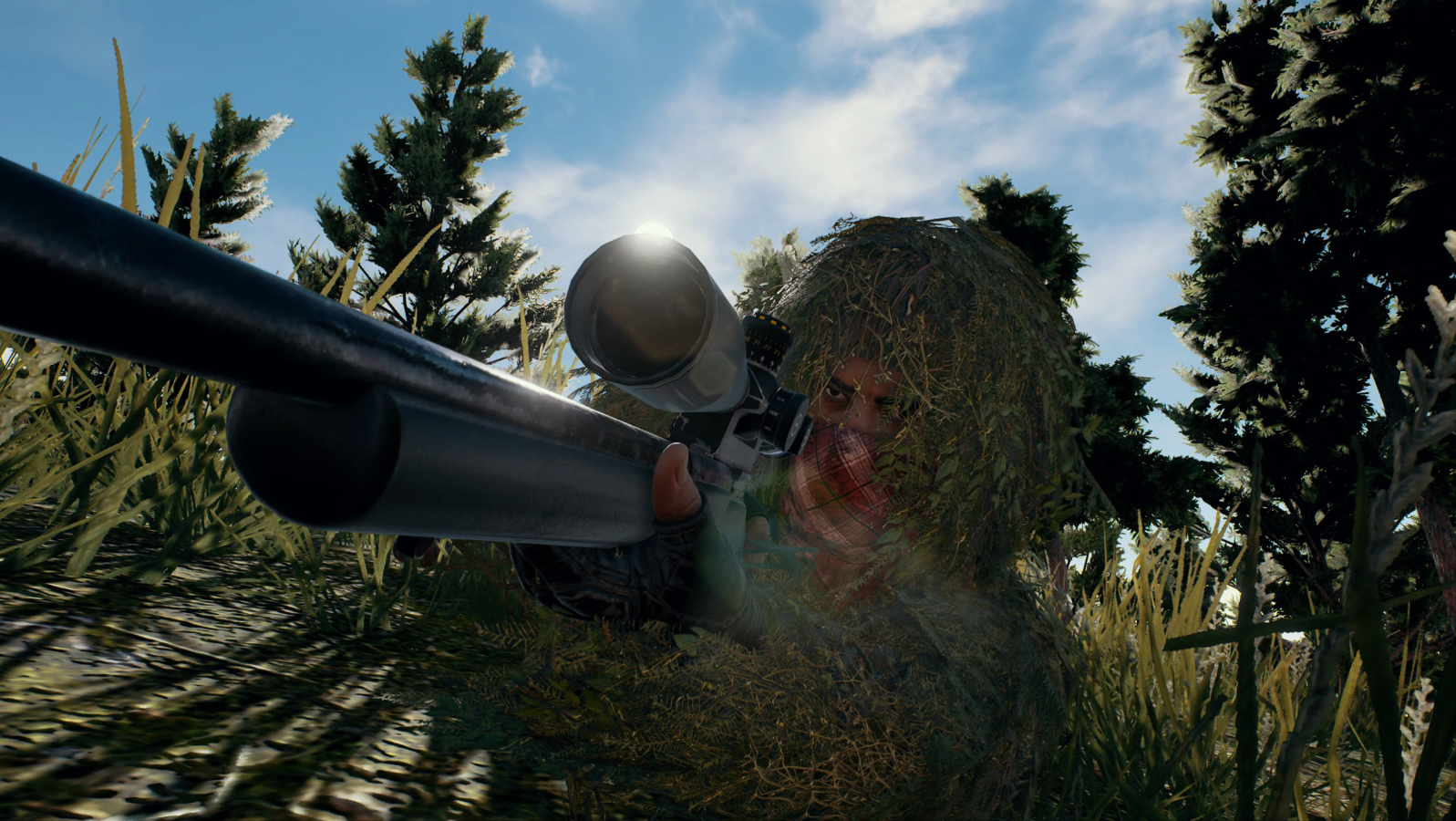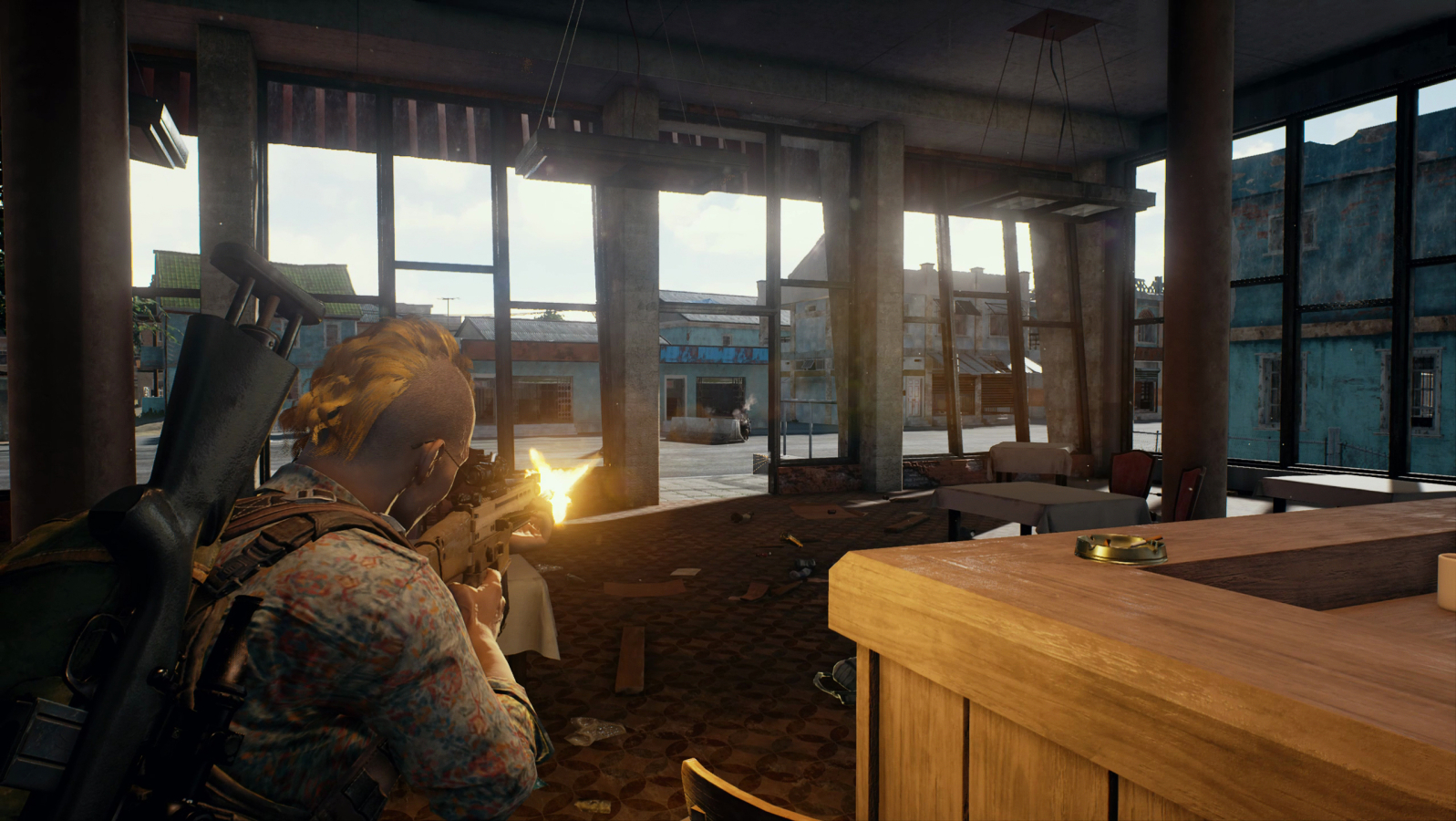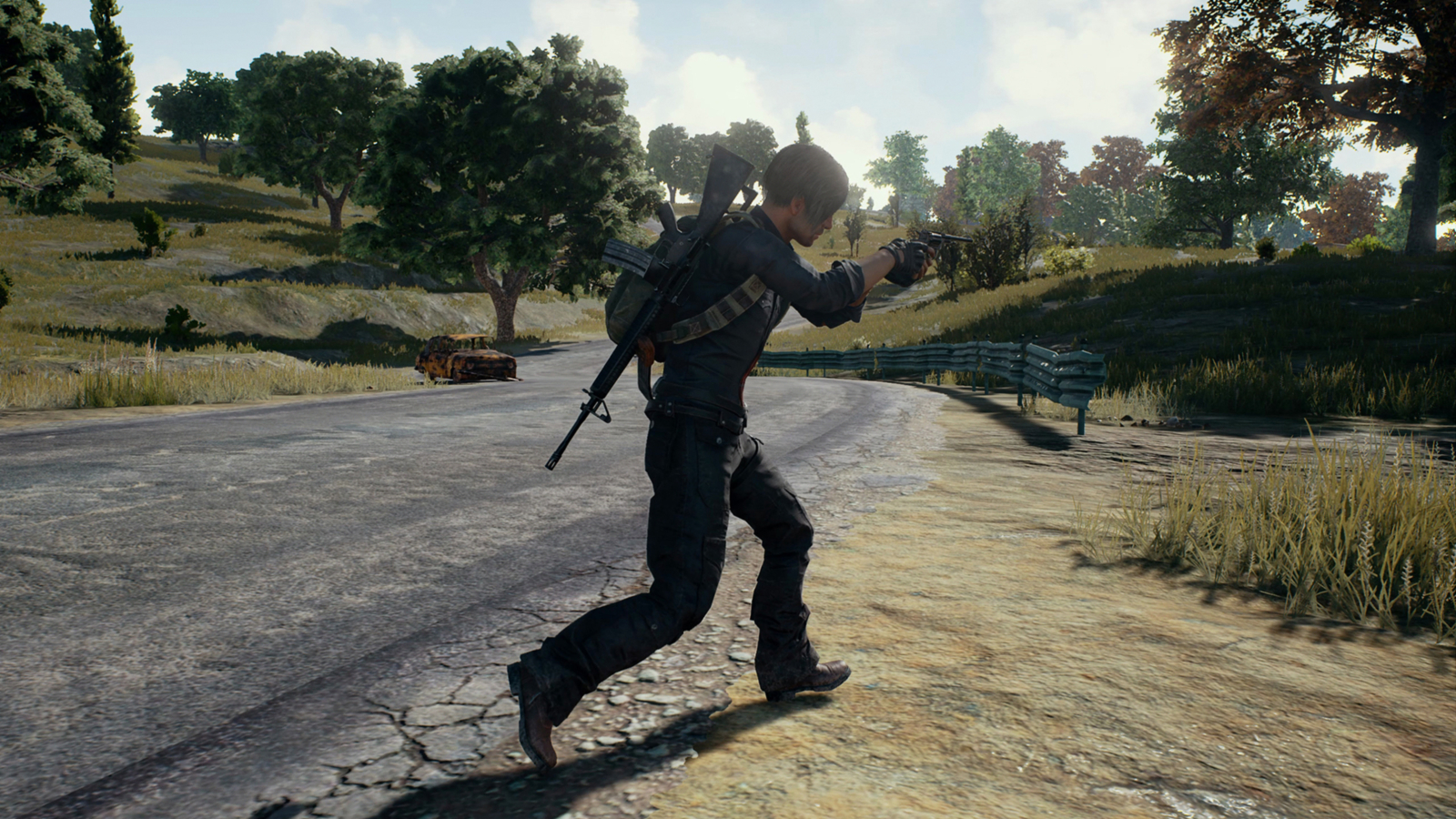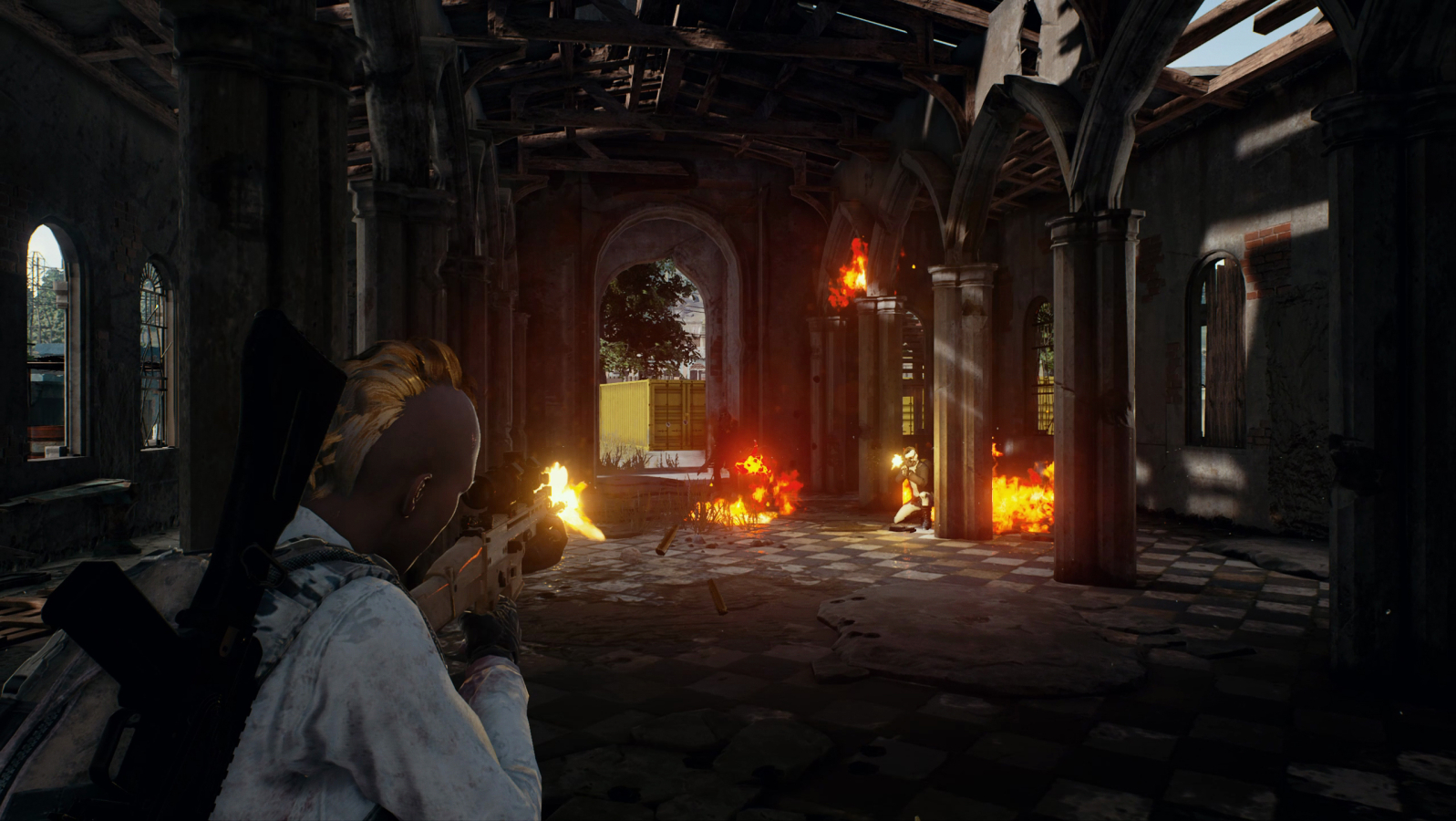From modder to pro, the making of PlayerUnknown's Battlegrounds
And the 'poison pill' of Early Access.
Playerunknown's Battlegrounds, or PUBG, is the brainchild of one man, Irishman Brendan Greene, aka Playerunknown, who began the game as a mod before being picked up by South Korean publisher Bluehole for the version we know today.
“Chang-Han Kim, an executive at Bluehole, reached out via an email and I was like 'okay...' and so I flew out to South Korea and they laid out their plan for what they wanted for a game and it was pretty much what I wanted from a stand-alone Battle Royale,” Greene told me during a Skype interview from his Korean office. “And so two weeks later I was on Korean time and we started development.”
Battle Royale is a mod made for several open-world zombie survival games, first DayZ, then ARMA 3 and H1Z1. It forms the foundation of PUBG. Riffing on the premise of the Japanese action movie of the same name, players are air-dropped onto a large island-map where they scavenge for guns, ammo and health and try and eliminate everyone else as the playable area gradually shrinks.
Han Kim had been looking for an action project for Bluehole for a decade, and when he saw the kind of community that had formed around the various versions of Battle Royale, he was eager to get ahead of the curve. So eager, in fact, that the position he offered Greene is the first of its kind for a South Korean publisher—a foreign creative director working with a development team more or less autonomously on-site within the company. The team is about three dozen, and though there's oversight, Greene has run of the day-to-day operations himself. “They trust us,” Greene says.
Though PUBG seems inescapable now, Battle Royale has been a mainstay of the streaming world since its inception. The ARMA 3 and H1Z1 versions were very popular among Twitch streamers, something Greene himself was relatively oblivious to. “I like to play games, not watch them.” It wasn't until a friend turned him onto a streamer playing his mod on ARMA 3 with 15,000 viewers that he saw the scope and potential for what he was making. Seeing the massive third-person survival shooter as a spectator was something of a penny-drop moment that what he was doing may be special. “Y'know, it's fun to watch, every game is different. Everything that happens is unexpected.”
It wasn't until a friend turned him onto a streamer playing his mod on ARMA 3 with 15,000 viewers that he saw the scope and potential for what he was making.
Development on PUBG began early 2016. The game was built from scratch in Unreal Engine 4. Creating it from the ground up meant finally merging the various elements Greene liked from across each edition of Battle Royale into something that felt definitive. The movement systems of one could be merged with the weapon choice of another and so on. It also meant that Brendan's work wouldn't be relying on another game's infrastructure to exist. No longer was he living in fear of a new update rendering hours of his time suddenly useless, something he was never perturbed by, but is nonetheless relieved to be free of.
Battlegrounds isn't a drastic change from the assorted versions of Battle Royal one can find online, either. Everything is just slicker, looks better and there's more options for mayhem, like assorted vehicles and greater selection of weapons. The intention with PUBG is to make something stand-alone, without relying too much on features or mechanics from any other games. Greene maintains an open relationship with his players to improve and grow PUBG—first-person servers, for example, is a regular ARMA 3-inspired request they're currently working to fulfil—but he's steadfast that Battlegrounds remain distinct. Players looking for Battlegrounds to be a replica of its forebears may be disappointed. “I always tell them, we're trying to make our own game, that's the key here,” He said. “You may want things from other games, but if you want to play those games, they exist.”
Keep up to date with the most important stories and the best deals, as picked by the PC Gamer team.
Battlegrounds development goes hand-in-hand with player feedback. A pre-alpha phase introduced 600 players to the game, and was followed by three further alpha stages and a closed beta earlier this year. A lot of the feedback was directed at balancing loot and weapon drops. Here Greene benefited his years modding ARMA 3. “Modding in ARMA 3 gave me two years to look at what worked, what didn't work, try some stuff,” He stated. “So by the time I came here to Korea to develop the game I had all the systems for the game previously designed.”
It has been an adventure for Greene, and a very new project for Bluehole. The publisher specializes in MMORPGs and although Korea has some shooters—Crossfire is name-checked as “the biggest game no-one's ever heard of”—there was a lingering concern over how Bluehole would handle this new breed of online arena shooter. A new focus on data analysis has helped, and the player numbers speak for themselves. “They love their spreadsheets, they love analyzing the data and it's really shown in the systems we have that they're fully fleshed out,” Greene said. “It's shown in the game's popularity—these systems work.”
According to Greene, once the loot system was organized, the only real challenge has getting Unreal to work at such a large scale, but even those roadblocks have been minimal. The expertise of their engineering team and Unreal being open source have meant that, so far at least, every problem has been met with a solution after some tinkering.
Although launching on Early Access this past March has proven to be a huge success, Greene was wary of associating his game with the platform. A “poison pill” he calls it. He was adamantly against using the service before executives at Bluehole convinced him that broad public feedback was the best way to finish the game. As much as the game has benefited from its public gestation period, Greene is keen to get the game properly released.
“They were adamant that large-scale testing is what you need to get the game complete, so we went with it,” Greene said. “We intend to be in Early Access for six months total. Maybe a month or two longer than that, but really we expect to be out by Fall of this year.”





